Feeding Tube Awareness Guide: What’s that thing in her nose?
Feeding Tube Awareness is low. “What’s that thing in her nose?” is something I heard countless times during my daughter’s first medically complex year. I’m passionate about raising awareness about feeding tubes. What they are, why they matter, and how to support those who need them.
What do you know about feeding tubes? Do you know someone with a feeding tube? Let’s go through some feeding tube facts and basics, and answer everyone’s burning questions about feeding tubes.
Our Experience with a Tube
While there was a war raging inside her little body, no one could see this. An invisible illness. Most of the time she looked like a typical infant. That is aside from the extra long yellow keychain with a purple screw cap hanging from her nose secured with cute patterned tape on her cheek. Understandably this is where everyone’s attention went. “What’s that?” on a very wide spectrum of intonation.
Due to my daughter’s critical congenital heart defects (CHD), she had open-heart surgery shortly after her birth which left her with a paralyzed vocal cord. Several factors made it unsafe and inefficient for her to safely consume any volume in a typical newborn fashion. Scrap the bottle, and the breast, we were saddled with a tube.
For eight long months, we fed our daughter using an NG tube. It was a relentless, exhausting, often defeating journey. Nearly all of my energy, and then some, went to some aspect of feeding her. Despite the difficulty, thanks to the NG, we got her to gain weight and grow, which was the point.
Jump to: Awareness Week, Facts, Types, Why, Tubie Life, TL;DR
No time to read right now? Pin it or email it to yourself for later!

What is Feeding Tube Awareness Week?
Feeding Tube Awareness Week is a week to focus on raising awareness, support, and understanding of those who need to use feeding tubes. The Feeding Tube Awareness Foundation originally began this campaign to raise positive awareness of tube feeding as a life-saving therapy.
When is Feeding Tube Awareness Week?
Feeding Tube Awareness Week is February 2 – 8, 2025. It occurs annually in early February in the US, UK, Canada, and Australia.
Why is tube feeding awareness important?
Unfortunately due to low awareness and education about tube feeding, those with feeding tubes (or parents of children with them) often face negativity, confusion, fear, ridicule, and isolation.
Babies, children, and adults with feeding tubes have them for valid medical reasons. Feeding tubes help save lives whereas previously there may have been no other option for them. We want to encourage and support those who need them to use them and not feel any shame about doing so.
With greater awareness comes greater understanding and thereby more acceptance and support.
Feeding Tube Facts & Basics
How many people use feeding tubes?
Approximately 500,000 people in the US required a feeding tube at some point over the last year.
What are the different types of feeding tubes?
NG tubes and G-tubes are the most commonly used feeding tubes.
- NG tube or Nasogastric tube – a thin flexible plastic tube that is inserted through the patient’s nose, back to the throat, and down the esophagus ending in the stomach
- G-tube or Gastrostomy tube – is a soft tube surgically placed through the skin directly into the stomach, often a MiniONE “button” or Mic-Key
Additionally, there are OG tubes, ND tubes, NJ tubes, GJ tubes, and J tubes.
- OG tube or Orogastric tube – a thin flexible plastic tube that is inserted through the patient’s mouth, back to the throat, and down the esophagus ending in the stomach
- ND tube or Nasoduodenal Tube – a thin flexible plastic tube that is inserted through the patient’s nose, back to the throat, down the esophagus, through the stomach, ending in the duodenum (the first part of the small intestine)
- NJ tube or Nasojejunal Tube – a thin flexible plastic tube that is inserted through the patient’s nose, back to the throat, and down the esophagus, through the stomach, ending in the jejunum (the second part of the small intestine)
- GJ-tube or Gastrojejunostomy tube – a soft tube like a G-tube placed surgically from the outside of the stomach through the skin into the stomach, and a GJ has an additional tube attached inside that goes through the stomach ending in the jejunum
- J-tube or Jejunostomy tube – a soft tube surgically placed through the skin from the exterior of the abdomen through the skin ending in the jejunum (the second part of the small intestine)
NG Tube

Source: Saint Luke’s
G-Tube
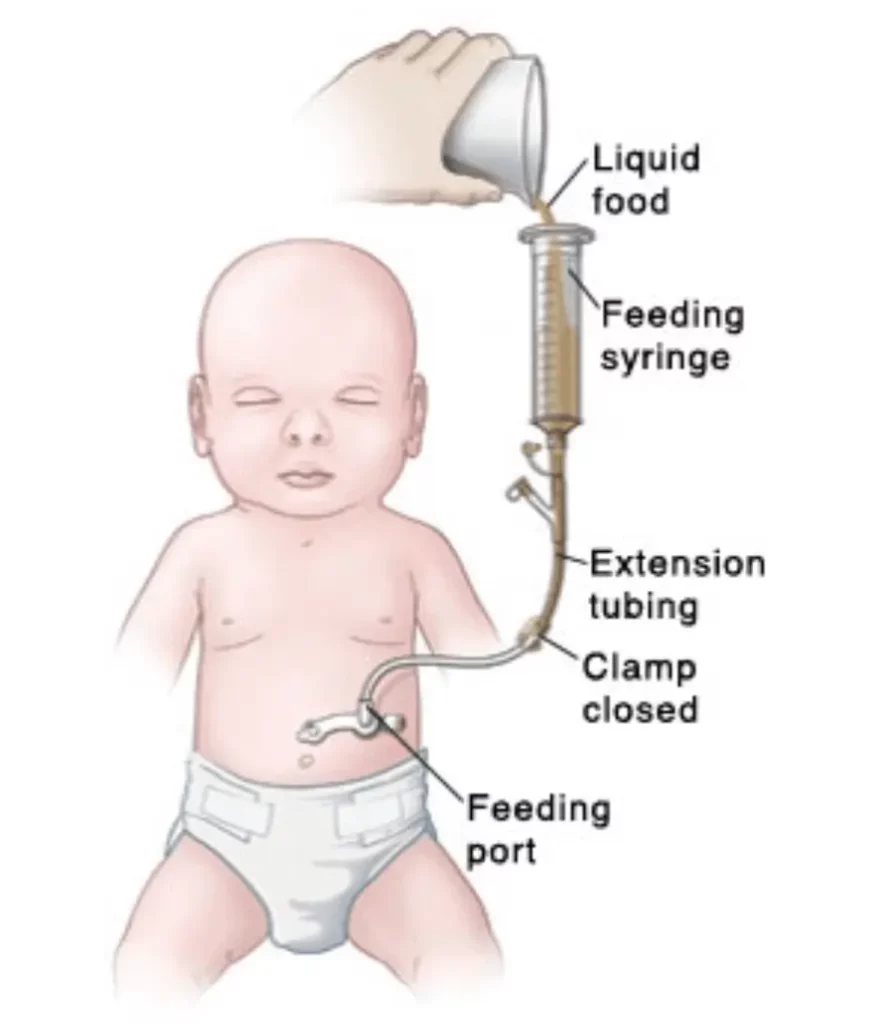
What does a feeding tube look like?
A feeding tube is a tube and it looks like a tube. Feeding tubes vary depending on the type of tube, brand, and size. OG and NG tubes and their variations are longer because they need to go all the way from the face down to the stomach. G and J tubes are shorter since they go directly from outside the belly to right inside the body.
Feeding tubes have ports on the external side which are used to attach other tubing, syringes, or bags. G-tubes and J-tubes might have a balloon, bumper, and retention disks (internally) to help keep the tube in place.
It’s obvious when someone has an OG or NG tube since some length of the tube hangs externally and it’s usually secured with tape to the person’s face. G-tubes, J-tubes, and GJ-tubes are generally more discreet and possible to hide under clothing so no one can see them. However, when attached to an extension and actively feeding, it will be more apparent.
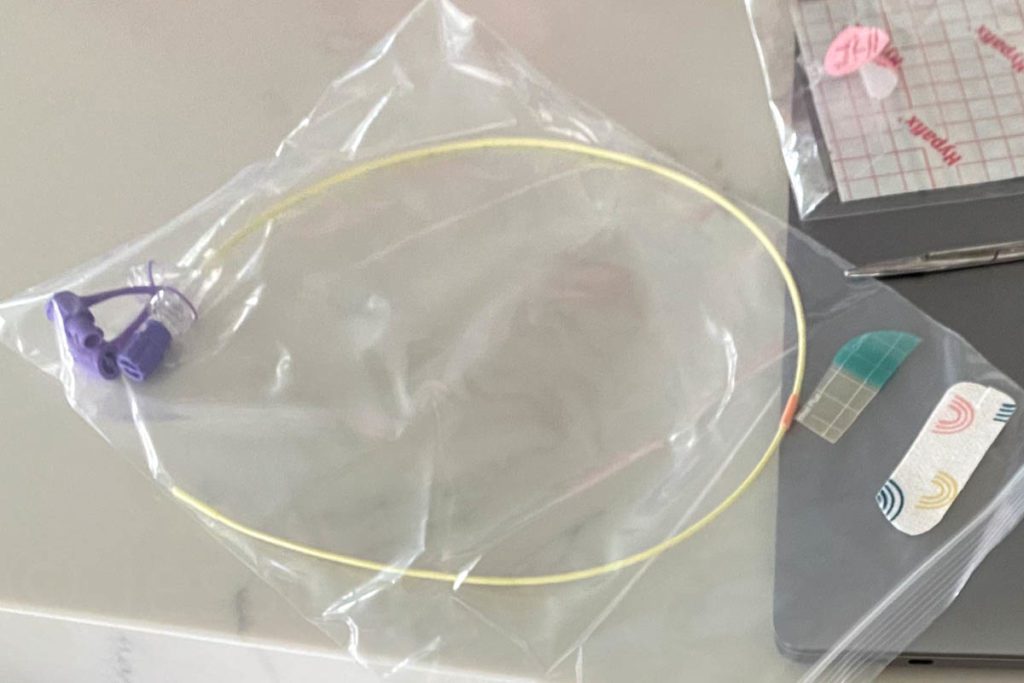

How do you use a feeding tube?
To use a feeding tube, first, the patient or caregiver will place contents in a feeding tube bag or feeding tube syringe. Contents need to be in liquid form to pass through the tubing, this could be formula, breastmilk, medicine, food blends, other liquid nutrition, or some combination. Next, you connect the bag or syringe to the feeding tube. Then you push the contents through the tubing to be dripped directly into the stomach or intestine. You can advance the liquid through the tubing using gravity, manually pushing a syringe, or by using a special tube feeding machine called an enteral feeding pump.
Additionally, there are often some health and safety check steps one should follow when using a feeding tube. How exactly someone uses their feeding tube will vary a bit based on their health condition, age, type of tube, caregiver preference, medical team’s advice, nutrition needs, etc.
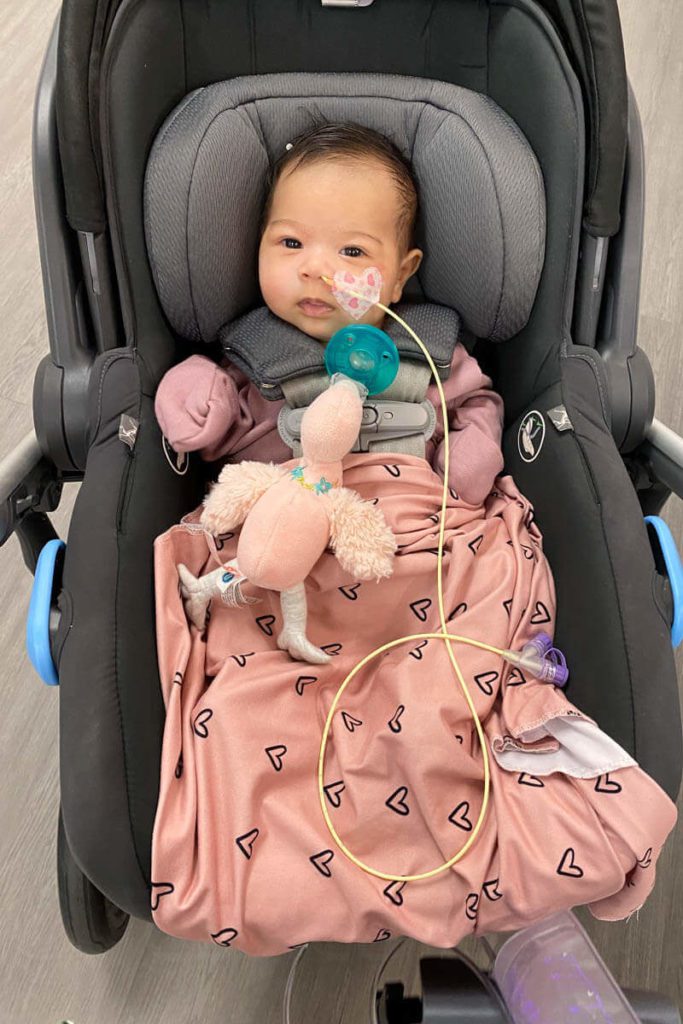
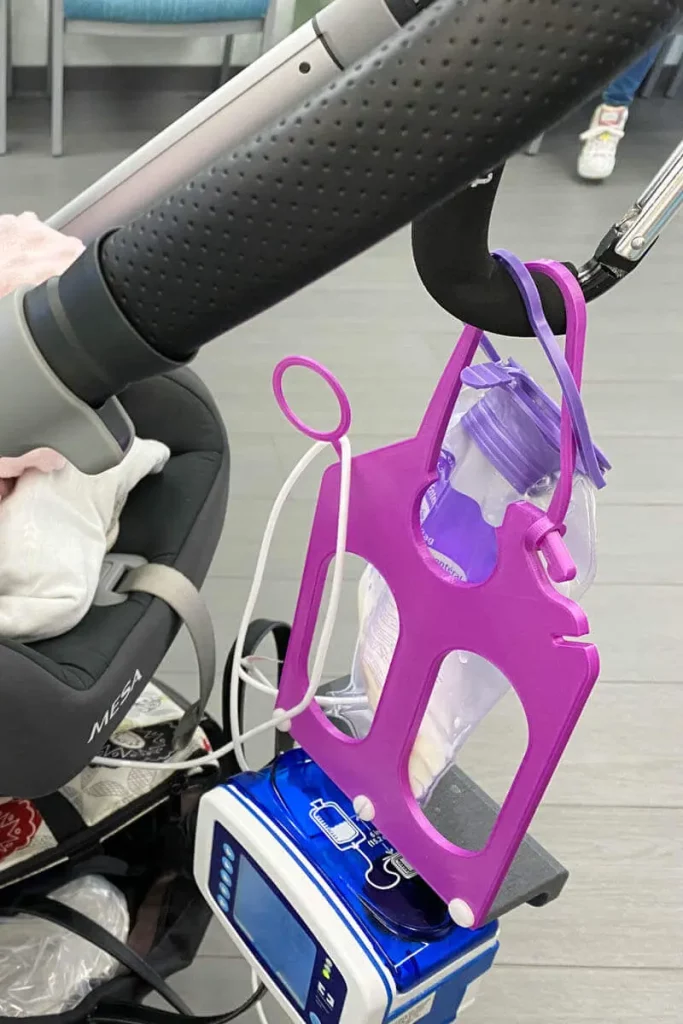
Common questions about feeding tubes
Why would a baby need a feeding tube?
A baby might need a feeding tube due to premature birth (an underdeveloped suck and swallow), lack of weight gain, abdominal or gastrointestinal defects, respiratory challenges, failure to thrive, congenital heart defects, and a host of other conditions.
How long can a baby have an NG tube?
NG tubes are best used for short periods and are not meant to support an ongoing long-term need. Of course, there are always some exceptions.
NG tubes need to be regularly changed, typically every 4 weeks (this can vary based on brand, conditions, hospital policies, etc.). In the long term, it is often suggested that a baby should not use an NG tube for more than 6 months, ideally. Once again, this will vary based on each tubie baby’s specific needs and their medical team’s advice.
Anecdotally, my daughter had hers for 8 months.
How long can a child have a G-tube?
A child can have a G-tube for as long as it is medically necessary – months, years, decades; they will have it removed if and when it’s no longer needed.
Why would an adult need a feeding tube?
An adult could need a feeding tube due to a variety of reasons such as stroke, paralysis, surgery, digestive or intestinal issues, gastrointestinal cancers, Crohn’s disease (serious cases), bowel problems, head and neck cancers, narrowing of the esophagus, serious eating disorders and numerous other conditions.
If someone has a feeding tube, does that mean they’re sick?
No, the need for a feeding tube does not automatically mean that a person is sick. Some people with feeding tubes are sick, however, not everyone with a feeding tube is necessarily sick. There are hundreds of conditions that can cause a short-term or long-term need for a feeding tube.
Can you leave the hospital with a feeding tube?
Yes, many tube-fed patients can continue tube feeding at home. Some hospitals have policies restricting what types of feeding tubes patients can use at home. Typically it’s possible to find a tube feeding option that will work for the patient to use at home. This is as long as their other health factors allow them to leave the hospital.
How do you gain weight on a feeding tube?
Whatever the person eats through their tube (breastmilk, formula, food blends) contains calories, and it is put directly in their stomach or intestine via the tube. They absorb the nutrients this way to gain weight.
Not having to chew or swallow can help many people with certain conditions still be able to gain weight, by using the tube, whereas they would struggle to gain weight if eating by mouth.
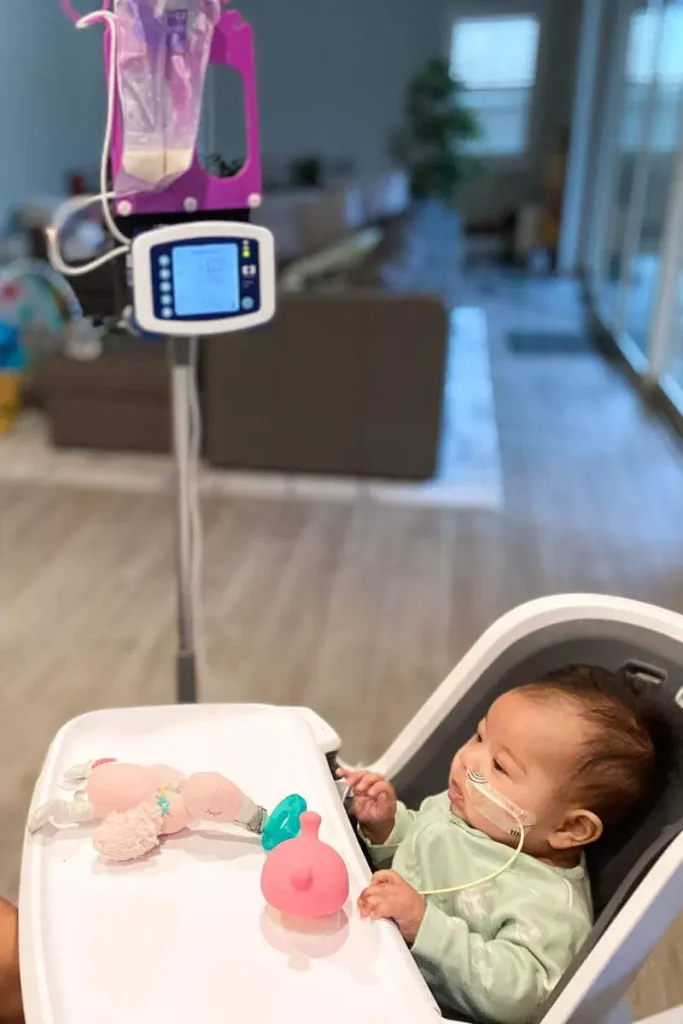
Feeding Tube Awareness Questions
Do you feel hungry with a feeding tube?
Yes, you can still feel hungry with a feeding tube. A feeding tube alone will not eliminate feelings of hunger. However, neither will it initiate feelings of hunger either.
Someone’s feeding volume intake, schedule, and condition will have more of an impact on their feelings of hunger than the tube itself.
Can you still eat regular food with a feeding tube?
Yes, you can still eat regular food with a feeding tube if your condition or circumstances do not restrict you from doing so.
Eating regular food with an OG or NG (and ND/NJ) tube can be uncomfortable for some since it is in the back of the throat and esophagus. However, it is still possible to eat with one in. Those with G, GJ, or J-tubes may have an easier time eating regular food with their tubes since they do not go through the mouth, nose, throat, or esophagus.
Nevertheless, it is ultimately up to someone’s medical team to determine whether it is safe for them to eat regular food with their feeding tube. Depending on the individual’s condition(s) and current health state, eating regular food may or may not be possible.
How frequently do tube-fed people eat?
How frequently someone with a tube eats varies based on their individual nutrition needs and feeding tolerance. Some people may only use their tube once per day, while others may need to use it continuously for 24 hours straight, and others fall everywhere in between.
Can a baby do tummy time with a feeding tube?
Yes, a baby with a feeding tube (any type) can still do tummy time.
Can you sleep with a feeding tube?
Yes, you can sleep with any kind of feeding tube. For those who need continuous feeds, making sure the tubing does not tangle and become a strangulation risk is important during sleep.
Can you go swimming with a feeding tube?
Yes, generally, people with a feeding tube can go swimming. If the tube was surgically placed, the person may need to wait a period before swimming. Also, they may need to take certain precautions (water cleanliness, stoma site care, etc.).
What happens when a feeding tube gets pulled out?
NG tubes can get pulled fairly easily, but others are less likely. Either way, they need to be replaced, typically, as soon as possible. Some hospitals train parents or other caregivers on how to replace certain types of feeding tubes at home, but others need to go to the hospital to have them replaced.
TL;DR on Feeding Tubes
No one chooses to use a feeding tube for fun, there is always a medical reason. There are hundreds of different conditions that could necessitate a feeding tube. The tiniest preemie newborns all the way to the oldest elderly adults can use feeding tubes.
The purpose of a feeding tube is to allow calories, nutrition, and medicine to be delivered directly to someone’s stomach or intestine, bypassing the need to intake, chew, swallow, and sometimes even digest. Feeding tubes help patients gain weight and improve their health. Feeding tubes save lives.

Raising Feeding Tube Awareness Together
Aside from when in specialized medical settings and online, I have yet to come across another NG tubie baby in person. And I live in a densely populated place! Otherness can be rough.
It is not uncommon for those needing a feeding tube to feel shame or isolation. Tube feeding typically allows people to live more freely and fully. Don’t assume tube-feeding individuals can’t do this or that. It’s unlikely that a feeding tube will restrict them.
If they are restricted in certain activities, it is more likely due to their condition(s) or health status rather than because of their feeding tube.
Today’s tube feeding options can help some people live more active and healthy lifestyles that may have otherwise not been possible. Feeding tubes deserve to be embraced and celebrated (not that they don’t have challenges).
If you see anyone – baby, child, adult – with a feeding tube, don’t be scared. Read this guide and do your research. Ask questions kindly if you’re curious. Most people are willing to answer and help educate others about tube feeding as long as you’re respectful and they have the capacity (which they may understandably not).
Your tubie friends (and their parents) need acceptance and support, not distance and disgust!
Sources: Avanos, Cincinnati Children’s Hospital Medical Center, Cleveland Clinic, Health, Nemours, St. Jude Children’s Research Hospital, Verywell Health, WebMD


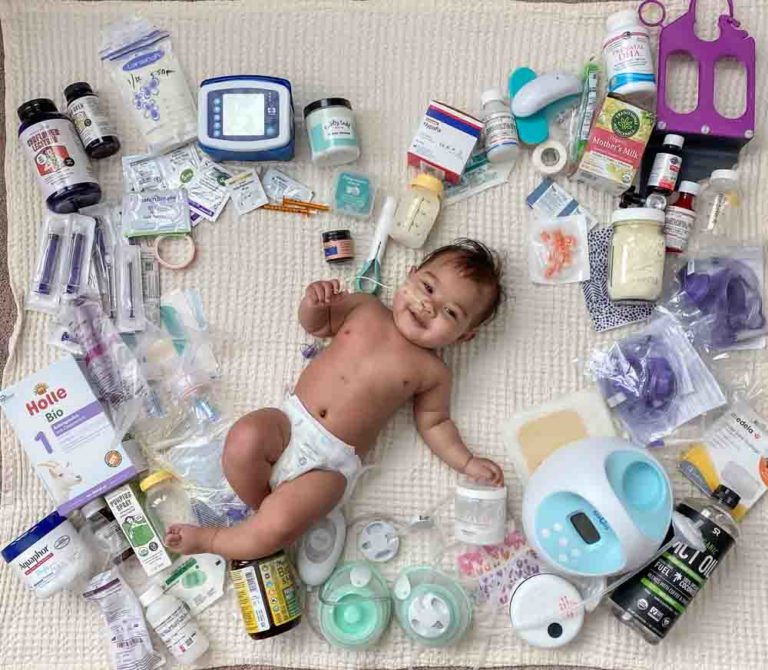
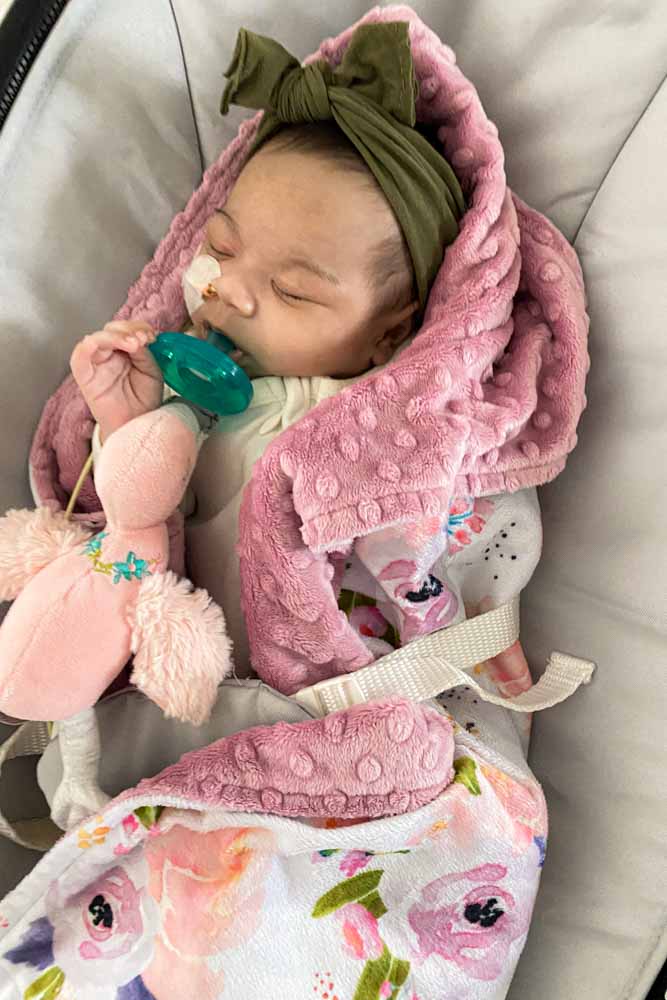

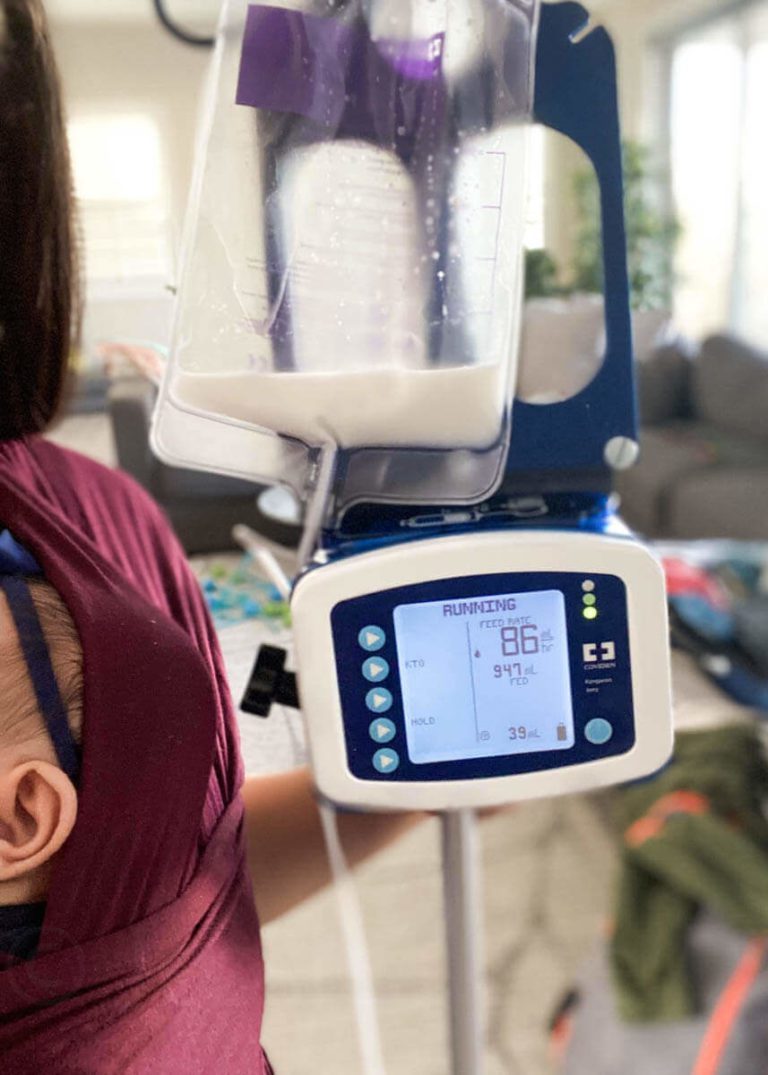
Thank you for creating such a great piece of content! Amazing!
I hope it helps, thanks for reading!